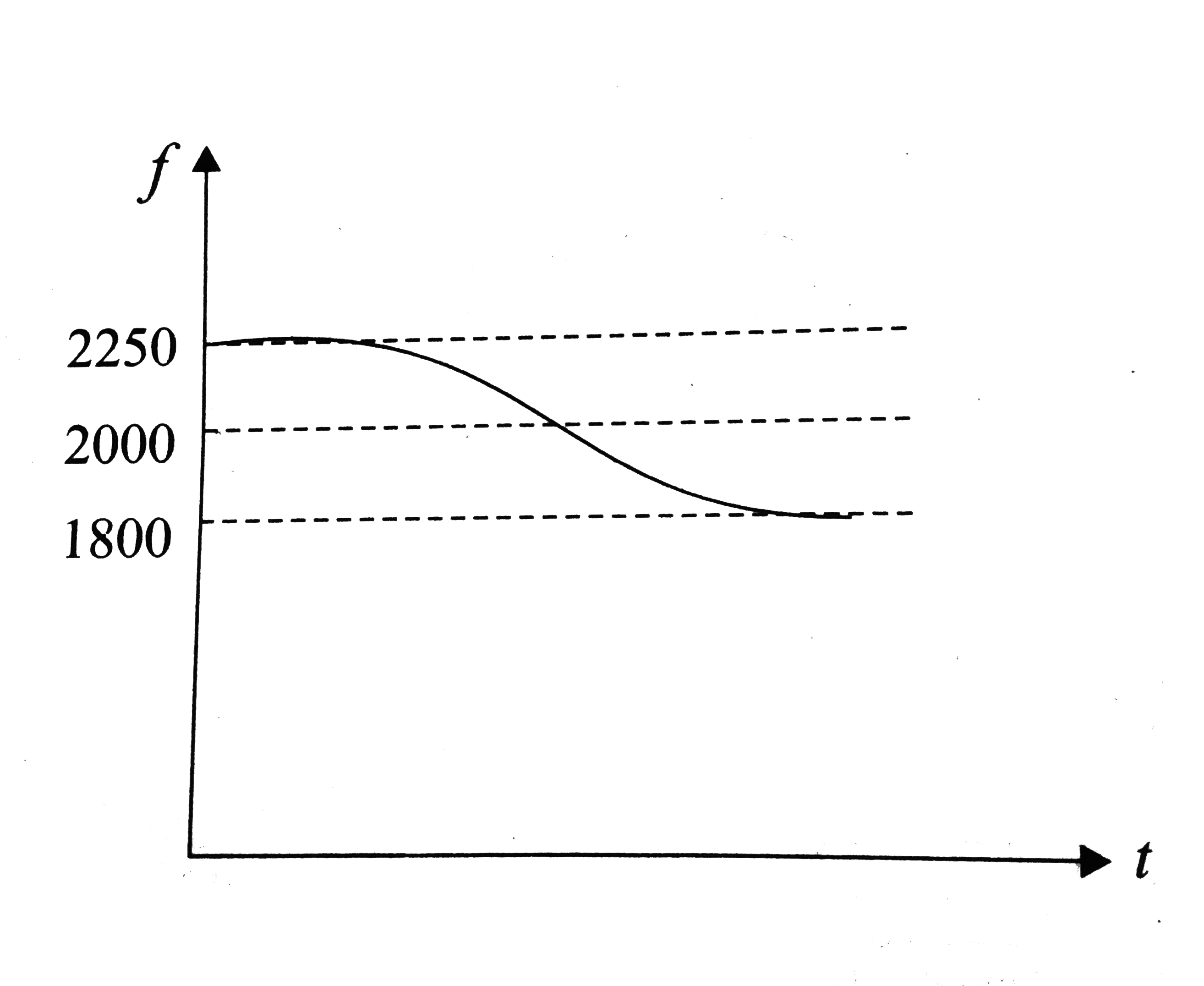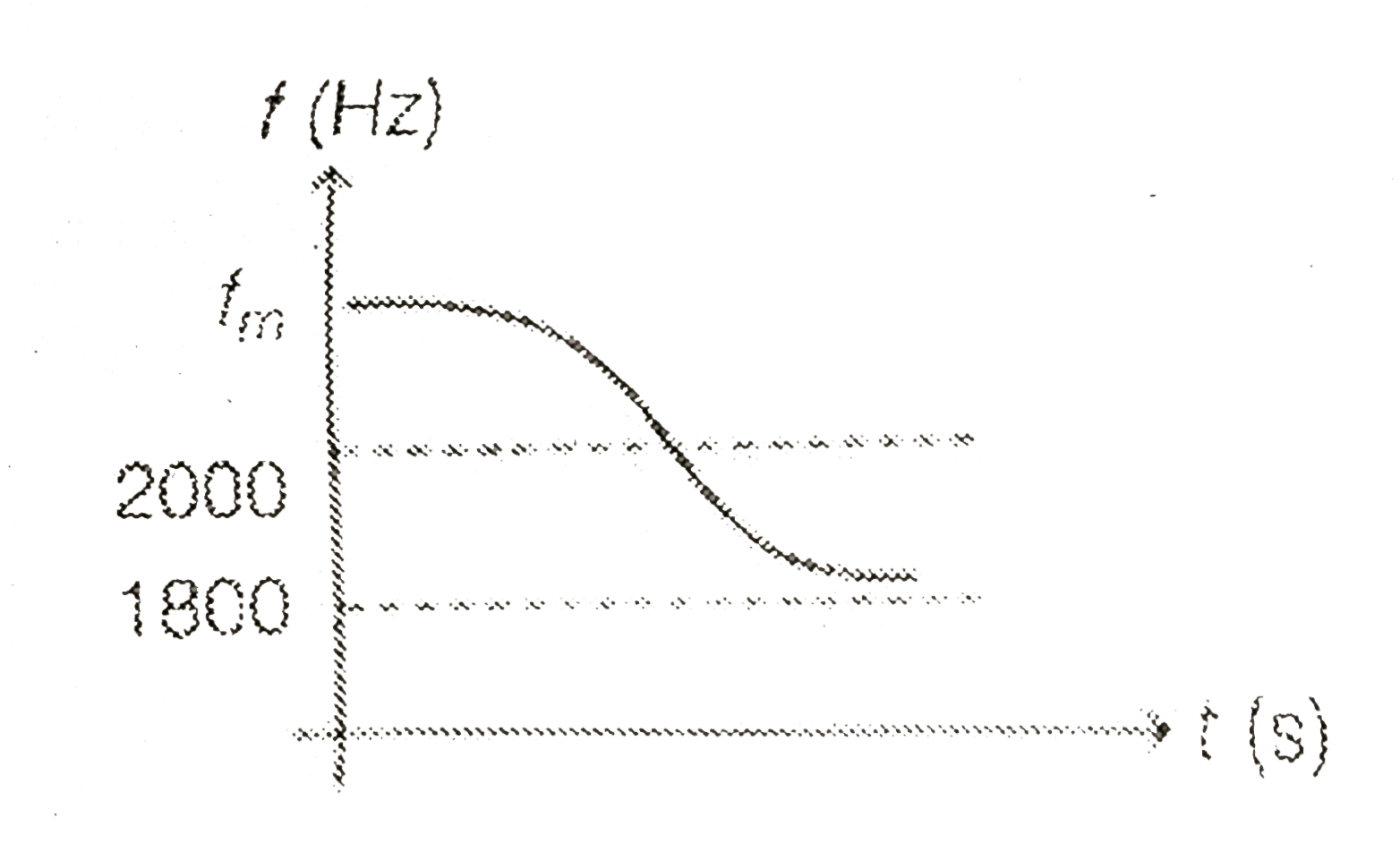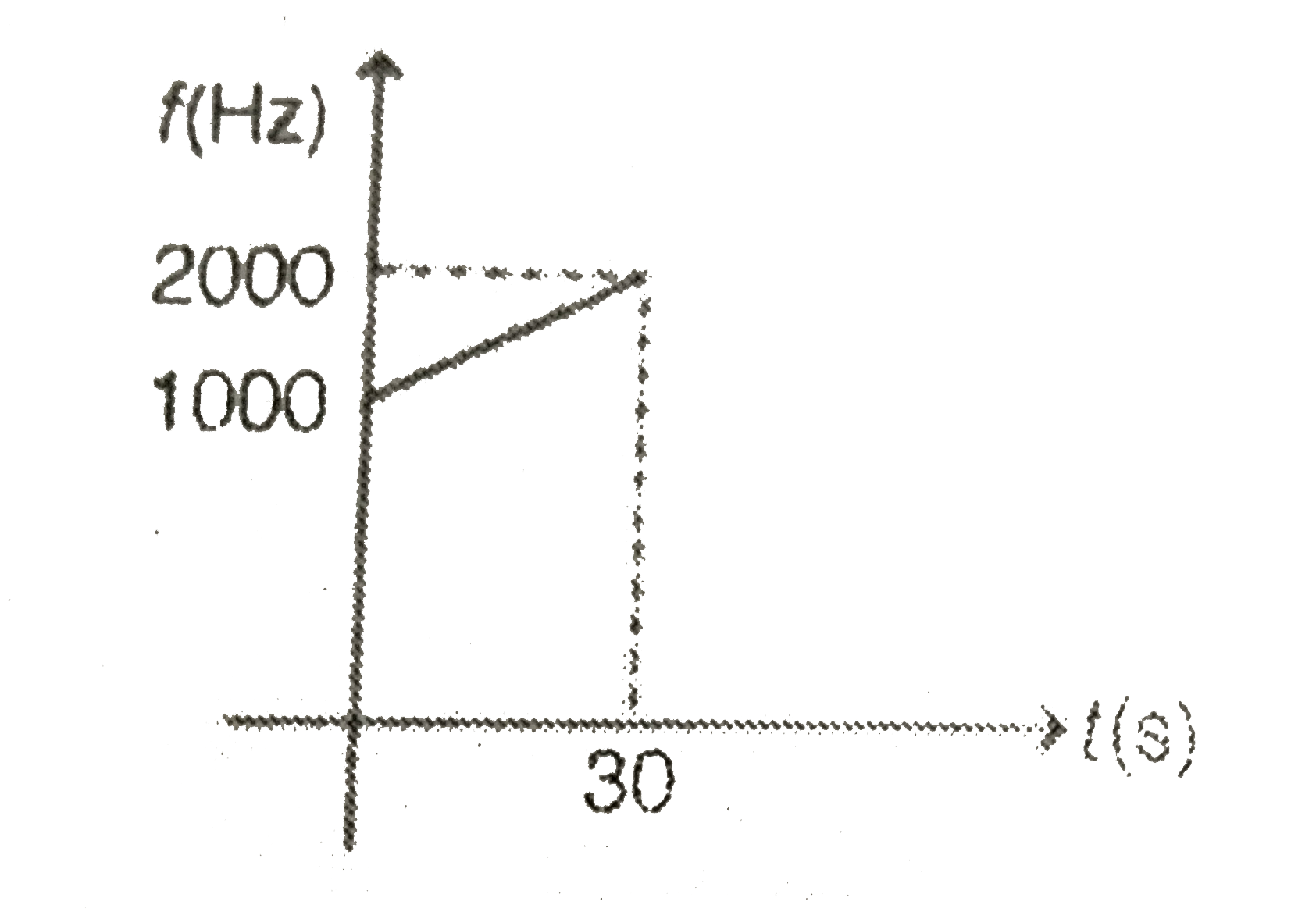
A statinary observer receives a sound of frequency 2000 Hz. The variation of apparent frequency and time is shown. Find the speed of source, if velocity of sound is 300ms
The minimum value of apparent frequency is 889 Hz
The natural frequency of souce is 1000 Hz
The frequency time curve corresponds to a source moving at an angle to the stationary observer.
The maximum value of apparent frequency is 1111 Hz
The correct Answer is:A

This frequency-time curve corresponds to a source moving at an angle to a stationary observer.
In the region SN, the source is moving towards the observer, i.e., the apparent frequency
n'=n0(vv−vScosθ)
n'=n0(300300−30cosθ)
When θ=π2,i.e, at N'
n'=n0=1000Hz, i.e., natural frequency of source, in the region NS' the source is moving away from the observer, i.e., apparent frequency
n'=n0(300300−30cosθ)
when θ=0,i.e., cosθ=1,
nmax=n0vv−vS=(1000Hz)(300ms)(300ms−30ms)
=109×1000Hz=1111Hz
nmin=n0vv+vS=1000×300330=909Hz
Topper's Solved these Questions
- SOUND WAVES AND DOPPLER EFFECTBOOK - CENGAGE PHYSICS ENGLISHCHAPTER - SOUND WAVES AND DOPPLER EFFECTEXERCISE - Multiple Correct
44 Videos
- SOUND WAVES AND DOPPLER EFFECTBOOK - CENGAGE PHYSICS ENGLISHCHAPTER - SOUND WAVES AND DOPPLER EFFECTEXERCISE - Assertion-Reasoning
24 Videos
- SOUND WAVES AND DOPPLER EFFECTBOOK - CENGAGE PHYSICS ENGLISHCHAPTER - SOUND WAVES AND DOPPLER EFFECTEXERCISE - Subjective
56 Videos
- RIGID BODY DYNAMICS 2BOOK - CENGAGE PHYSICS ENGLISHCHAPTER - RIGID BODY DYNAMICS 2EXERCISE - Interger
2 Videos
- SUPERPOSITION AND STANDING WAVESBOOK - CENGAGE PHYSICS ENGLISHCHAPTER - SUPERPOSITION AND STANDING WAVESEXERCISE - Comprehension Type
5 Videos
Similar Questions
A stationary observer receives a sound from a source of frequency 2000Hz moving with constant velocity. The apparent frequency varies with as shown in the figure

The value of fm is (2300−10x)Hz. Find the value of x. (Take speed of sound =30m/s and neglect the time taken by sound to reach the stationary observer).
View SolutionA source emits sound of frequency 600Hz inside water. The frequency heard in air will be equal to (velocity of sound in water=1500ms, velocity of sound in air=300(m)/(s))
View Solution
Knowledge Check
An observer moves towards a stationary source of sound. The percentage change in the apparent frequency is
AzeroB0.05C0.1D0.2

A stationary observer receives a sound from a sound of freqeuency v0 moving with a constant velocity vS=30ms The apparent frequency varies with time as shown in figure. Velocity of sound v=300ms. Then which of the following is incorrect?
View Solution
A stationary observer receives a sound from a sound of freqeuency v0 moving with a constant velocity vS=30ms The apparent frequency varies with time as shown in figure. Velocity of sound v=300ms. Then which of the following is incorrect?
View Solutiona bus is moving towards and stationary observer with speed 20 m/s blows a horn of frequency 200 Hz. the frequency of sound heard by the observer is approximately ( take speed of sound 320 m/s)
View SolutionA man standing on a platform hears the sound of frequency 604 Hz coming from a frequency 550 Hz from a train whistle moving towards the platform. If the velocity of sound is 330 m/s, then what is the speed of train?
View SolutionA source is moving with a constant speed of 10 m/s on a circular track of 200 m. It emits a sound of frequency 200 Hz. A listener stands at the centre of the circular track. The frequency received by the listener is (velocity of sound = 340 m/s)
View SolutionA stationary observer receiver a sound of frequency f0=2000Hz .Sourece is moving with constant velocity on a road at some non-zero prependicular distance from observer . The apparent frequncy f varies with times as show in figure . Speed of sound =300m/s. Find the maximum apparent frequency.

View SolutionA detector is released from rest over a source of sound of frequency f0=103Hz. The frequency observed by the detector at time t is plotted in the graph. The speed of sound in air is (g=10m/s2)

View Solution
